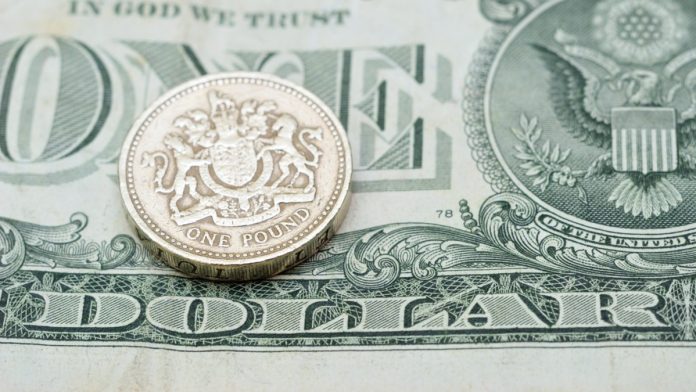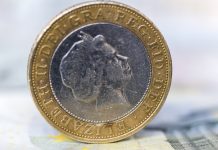The pound—US dollar exchange rate experienced a high level of volatility across the previous week. Brexit optimism pushed the pound to a high of US$1.3351 earlier in the week. The pair then moved lower towards the end of the week finishing up at US$1.3204. The pound has jumped higher in early trade on Monday.
| What do these figures mean? |
|---|
| When measuring the value of a pair of currencies, one set equals 1 unit and the other shows the current equivalent. As the market moves, the amount will vary from minute to minute.For example, it could be written:1 GBP = 1.28934 USDHere, £1 is equivalent to approximately $1.29. This specifically measures the pound’s worth against the dollar. If the US dollar amount increases in this pairing, it’s positive for the pound. Or, if you were looking at it the other way around:1 USD = 0.77786 GBPIn this example, $1 is equivalent to approximately £0.78. This measures the US dollar’s worth versus the British pound. If the sterling number gets larger, it’s good news for the dollar. |
There were many Brexit development across the previous week. The pound benefited from UK Theresa May’s pledge to give Parliament a meaningful vote, a vote on a no deal Brexit and a vote to delay Brexit next week. Meanwhile the UK opposition leader has voiced his full support for a second referendum. The Brexit developments across the week mean that the UK could be moving further away a disorderly no deal Brexit. Given that top economists consider a no deal Brexit this to be the worst outcome for business and the pound, sterling has moved higher
| Why is a “soft” Brexit better for sterling than a “hard” Brexit? |
|---|
| A soft Brexit implies anything less than UK’s complete withdrawal from the EU. For example, it could mean the UK retains some form of membership to the European Union single market in exchange for some free movement of people, i.e. immigration. This is considered more positive than a “hard” Brexit, which is a full severance from the EU. The reason “soft” is considered more pound-friendly is because the economic impact would be lower. If there is less negative impact on the economy, foreign investors will continue to invest in the UK. As investment requires local currency, this increased demand for the pound then boosts its value. |
The pound took a hit towards the end of the week as Brexit optimism dried up and UK data highlighted the impact of Brexit uncertainty on the economy. UK consumer confidence remained low and UK manufacturing activity slowed and employment in the sector slipped to a 6-year low.
| Why does poor economic data drag on a country’s currency? |
|---|
| Slowing economic indicators point to a slowing economy. Weak economies have weaker currencies because institutions look to reduce investments in countries where growth prospects are low and then transfer money to countries with higher growth prospects. These institutions sell out of their investment and the local currency, thus increasing supply of the currency and pushing down the money’s worth. So, when a country or region has poor economic news, the value of the currency tends to fall. |
Today investors will continue watching Brexit developments closely, with the Brexit deadline just 26 days away. UK construction PMI data will also be in focus. Analysts are expecting a slight decrease in activity in February than in January.
Dollar Dives On US—Sino Trade Optimism
The dollar is out of favour moving into the new week for two principle reasons. Firstly, an easing of trade tensions between US and China. The two sides are reportedly nearing a trade deal which would bring an end of Trump’s trade tariffs on China and months of uncertainty. A deal could be signed between the two leaders as soon as this month.
As geopolitical tensions ease, the dollar, lost ground. As the world’s reserve currency, which investors and economists consider it to be a safe haven. When geopolitical tensions ease so does demand for the dollar.
Comments from President Trump were the second reason for the decline of the dollar. Trump was once again attacking the Federal Reserve. Trump said on Sunday that the dollar was too strong and criticized the Fed for hiking rates. Whilst Trump is not able to influence monetary policy his comments can have a short-term impact on the dollar’s value.
This publication is provided for general information purposes only and is not intended to cover every aspect of the topics with which it deals. It is not intended to amount to advice on which you should rely. You must obtain professional or specialist advice before taking, or refraining from, any action on the basis of the content in this publication. The information in this publication does not constitute legal, tax or other professional advice from TransferWise Inc., Currency Live or its affiliates. Prior results do not guarantee a similar outcome. We make no representations, warranties or guarantees, whether express or implied, that the content in the publication is accurate, complete or up to date. Consult our risk warning page for more details.
This article was initially published on TransferWise.com from the same author. The content at Currency Live is the sole opinion of the authors and in no way reflects the views of TransferWise Inc.





